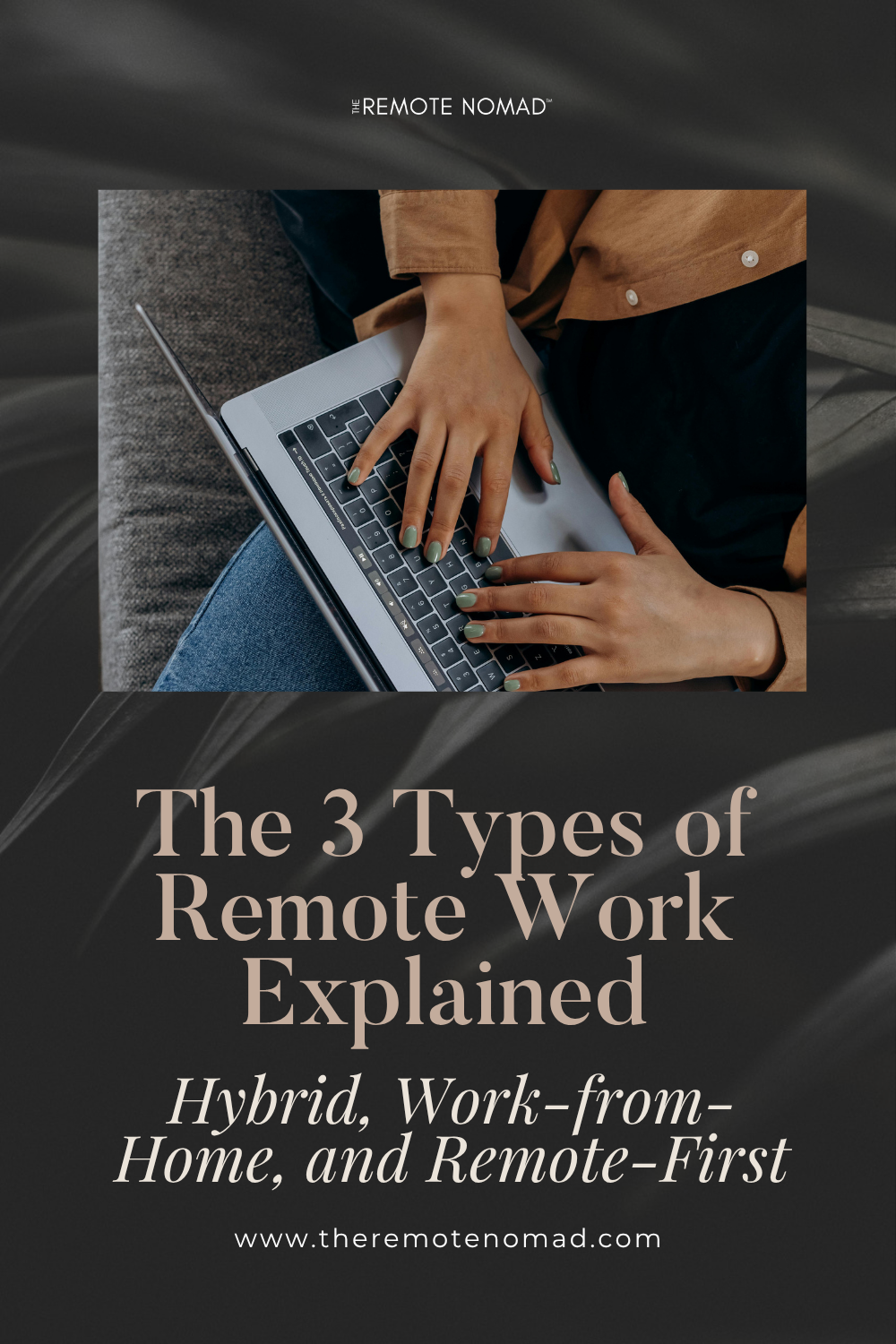The 3 Types of Remote Work Explained: Hybrid, Work-from-Home, and Remote-First
If there’s one thing that’s shaking up the modern workplace, it's the rise of remote work. Obviously, I’m here for it! More and more people are trading in their morning commutes and stuffy office cubicles for the freedom to work from anywhere. But what exactly is remote work, and what are the different types of remote work available today? That’s what I want to share with you today!
What is Remote Work?
Simply put, remote work is just like a traditional 9-5 job, except you’re not stuck at a desk in a specific location. Instead, you’re empowered to work from wherever you choose, whether that’s your cozy home office, a bustling coffee shop, or a beach on the other side of the world. Technology has made this lifestyle possible, and it’s quickly becoming the norm.
Want to land a remote job? Grab my free Remote Career Playbook. It walks you through the exact 6-step process to go remote:
Why Remote Work Is on the Rise
So, why are more companies embracing remote work? It’s simple: it’s a smarter way to do business. Companies save a ton of money on rent, utilities, and office supplies, while also gaining access to a larger, more diverse talent pool from all over the globe.
For remote workers, the benefits are endless. No more wasting hours in traffic, and you get the flexibility to design your workday around your life, not the other way around. Want to live abroad and work by the beach? Or maybe you just want to save on your cost of living by working from a more affordable location? Remote work makes it all possible.
The 3 Types of Remote Work Explained
Let's dive into the three main types of remote work, so you can decide which one fits you best!
1. Hybrid Remote Work
Hybrid remote work is a blend of the best of both worlds if you’re not feeling fully called to give up office life (or your favorite coworkers). It’s when companies have a mix of remote and on-site employees.
How It Works:
Some people work from a physical office, while others work remotely, and some may even alternate between the two. In a hybrid setup, you might be required to come into the office a few days a week or attend in-person meetings once a month. It offers flexibility but still maintains some elements of that traditional office structure.
Pros of Hybrid Remote Work
Flexibility: You get a balance between in-person collaboration and the independence of working remotely.
Social Interaction: You still have face-to-face time with colleagues, which can be great for building relationships and networking.
Cons of Hybrid Remote Work
Inconsistency: It can sometimes feel confusing or even unfair when you’re navigating between working remotely and commuting to the office.
Coordination Challenges: It requires extra effort to ensure remote and in-office teams feel equally included and informed.
Is Hybrid Right for You? If you want the best of both worlds and enjoy the occasional office buzz, a hybrid setup could be your sweet spot.
2. Work-from-Home (WFH)
This is the classic remote work setup most people picture: employees work entirely from home or from their preferred location.
How It Works:
The company doesn’t have a central office, and everyone collaborates online. Teams rely on digital tools like Slack, Zoom, and project management apps to stay connected and productive. Meetings, brainstorming sessions, and even company events all happen virtually.
Pros of Remote Work from Home
Ultimate Flexibility: Work from home—whether it’s your living room, a cozy coffee shop, or a shared workspace. You typically do have to stay in the same country (or state) of the business though!
Cost Savings: Say goodbye to commuting costs, expensive lunches, and dry-cleaning bills! There’s a really interesting statistic from FlexJobs that estimates that people who work from home save an average of $6000 or more every single year. If that isn’t enough for you, head here to my remote calculator to see how much time and money YOU can save going remote!
Cons of Remote Work from Home
Potential for Isolation: It’s easy to feel lonely if you’re not proactive about social interaction.
Discipline Required: You’ve got to be self-motivated and have excellent time management skills to stay on track.
Location restrictions: In some cases, you may be required to live locally, or in the US.
Is Remote Work from Home Right for You? If you value freedom, autonomy, and the idea of working without a set location, this could be your ideal remote work setup.
3. Remote-First or Remote Worldwide Work
Remote-first companies are built from the ground up to support remote work. They don’t just allow remote work—they prioritize it.
How It Works:
These companies often have employees spread across the globe, making them truly location-independent. Everything, from onboarding to daily operations, is designed with remote work in mind. They leverage technology to create a strong company culture and keep everyone connected, regardless of location.
Pros of Remote Worldwide:
Diverse Talent Pool: Companies can hire the best talent from anywhere in the world.
Location Independence: Employees can truly work from anywhere, without limitations.
Cons of Remote Worldwide:
Time Zone Challenges: Scheduling meetings can be tricky when your team is spread across different time zones.
Requires Strong Communication: It takes effort and intention to maintain a cohesive team culture.
Is Remote Worldwide Right for You? If you’re someone who thrives in a global environment and enjoys the idea of working with people from different cultures, this setup might be perfect for you. This was personally the best fit for me (and my travel bug!) and I haven’t looked back.
Types of Remote Jobs Available
Common Remote Job Roles and Industries
Now that you know the three main types of remote work, let’s explore the kinds of remote jobs you can find. The options are truly endless! Remote work spans nearly every industry, and chances are, your skillset is needed somewhere. From roles in marketing, customer service, and project management to opportunities in creative fields like writing and graphic design, there’s a remote job out there for nearly every skill set and industry.
If you’re looking for a remote job, a great place to start is FlexJobs.com. They currently have over 16,889 fully remote jobs posted across more than 50 industries. No matter your background or skillset, there’s a remote job waiting for you to explore!
Ready to Find A Remote Job?
There you have it—the three main types of remote work and a sneak peek into the endless job possibilities waiting for you. Remote work isn’t just a trend; it’s a transformative shift that offers freedom, flexibility, and a better work-life balance. Whether you’re drawn to the hybrid model, crave the independence of working from home, or dream of a remote-first lifestyle, there’s a place for you in this remote work revolution.
Want a step-by-step plan to find the right remote job for you? Download the free Remote Career Playbook and learn the exact 6-step process I use to help clients go remote — with clarity and confidence.



